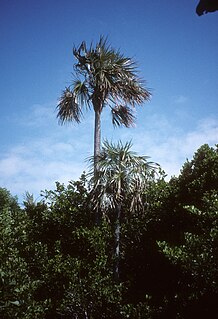
Malvaceae, or the mallows, is a family of flowering plants estimated to contain 244 genera with 4225 known species. Well-known members of economic importance include okra, cotton, cacao and durian. There are also some genera containing familiar ornamentals, such as Alcea (hollyhock), Malva (mallow) and Lavatera, as well as Tilia. The largest genera in terms of number of species include Hibiscus, Sterculia, Dombeya, Pavonia and Sida.

Bombacaceae were long recognised as a family of flowering plants or Angiospermae. The family name was based on the type genus Bombax. As is true for many botanical names, circumscription and status of the taxon has varied with taxonomic point of view, and currently the preference is to transfer most of the erstwhile family Bombacaceae to the subfamily Bombacoideae within the family Malvaceae in the order Malvales. The rest of the family were transferred to other taxa, notably the new family Durionaceae. Irrespective of current taxonomic status, many of the species originally included in the Bombacaceae are of considerable ecological, historical, horticultural, and economic importance, such as balsa, kapok, baobab and durian.

Coccothrinax is a genus of palms in the family Arecaceae. There are more than 50 species described in the genus, plus many synonyms and subspecies. A new species was described as recently as 2017. Many Coccothrinax produce thatch. In Spanish-speaking countries, guano is a common name applied to Coccothrinax palms. The species are native throughout the Caribbean, the Bahamas, extreme southern Florida and southeastern Mexico, but most of the species are known only from Cuba.

Ctenochasma is a genus of Late Jurassic ctenochasmatid pterosaur belonging to the suborder Pterodactyloidea. Three species are currently recognized: C. roemeri, C. taqueti, and C. elegans. Their fossilized remains have been found in the Solnhofen Limestone of Bavaria, Germany, the "Purbeck Group" of northeastern Germany, and the Calcaires tâchetés of eastern France.
Ulmus ismaelisTodzia & Panero is a small tree discovered circa 1997 in southern Mexico by Ismael Calzada in riparian forest along the Mixteco River system in northeastern Oaxaca, where it grows among large boulders in the limestone canyons. The tree has since been found in Honduras and El Salvador. The tree is exceptional in its habitat: dry places, sometimes with <500 mm per annum precipitation, and comparatively low altitudes of 450–750 m.
Spirotheca rosea is a species of tree in the family Malvaceae. It is found from Costa Rica to Bolivia. It is threatened by habitat loss.
Coccothrinax torrida is a palm endemic to southeastern Cuba. It is known from a single isolated hill on the coast of the Guantánamo Province. The climate of the area is described as semi-desert with 9 or 10 dry months. Like other members of the genus, C. torrida is a fan palm. Trees are single-stemmed, between 2 and 8 m tall with stems 2.5 to 3.9 cm in diameter. The fruit is creamy white, 4.8–6.3 mm in diameter.
Curitiba is a monotypic genus of plant in family Myrtaceae, endemic to Brazil. The only species in the genus, Curitiba prismatica, was originally described as Eugenia prismatica by D.Legrand in 1969 and moved to its own genus by Andrew M. Salywon and Leslie Roger Landrum in 2007.

John Thomas Howell was an American botanist and taxonomist. He became an expert of Eriogonum (buckwheat) species, which are widely represented in the native California flora.
Cunninghamella elegans is a species of fungus in the genus Cunninghamella found in soil.
Akrosida floribunda is native to the Dominican Republic. It grows as a tree, bearing young branches that lose their stellate pubescence with age. Leaves - alternate, broadly ovate and palmately seven-veined - bear subtle, crenate-dentate teeth and abaxial surfaces colored more palely than their adaxial surfaces. Flowers - arranged in axillary fascicles - bear a gamosepalous but lobed calyx and clawed petals with or without two basal auriculae.
Urvillea is a plant genus in the family Sapindaceae.

Cleofé Elsa Calderón was an Argentine botanist.

Cycas annaikalensis is a Critically Endangered species of cycad in the genus Cycas, native to the state of Kerala in India, where it is endemic to the Annaikal Hills near Palakkad. It was discovered in 2006. There are less than 100 individuals remaining.

Capsicum eximium is a member of the genus Capsicum with 2n=2x=24, and native to the New World, specifically the Andean region of South America. It is one of the "purple-flowered" Capsicums along with Capsicum cardenasii and Capsicum pubescens. Like most other chili peppers, it is both pungent and self-compatible. It is a member of the Pubescenscomplex, a natural group of highly related Capsicums. Natural hybrids between C. pubescens as well as C. tovarii have been found, further supporting the relationship of these species.
Ophiocaryon is a small genus of flowering plants in the family Sabiaceae found mainly in the Guayana Shield and Amazon basin in South America.

The Australian Journal of Herpetology was a scientific journal specialising in the study of amphibians and reptiles (herpetology) published from 1981 until 1983 with an additional supplemental series released in 1985. The Australian Herpetologists' League established the journal as a peer-reviewed periodical and published its first two issues in 1981. Richard W. Wells, a first-year biology student, served as the journal's editor-in-chief, supporting an editorial board of three Australian researchers.
Bernoullia is a genus of tropical trees in the mallow family, Malvaceae. It was established by English botanist Daniel Oliver in 1873. There are three accepted species, which occur from Mexico to Colombia.
Carolyn F. Wilkins is an Australian botanist, who currently works for the Western Australian Department of Biodiversity, Conservation and Attractions.









